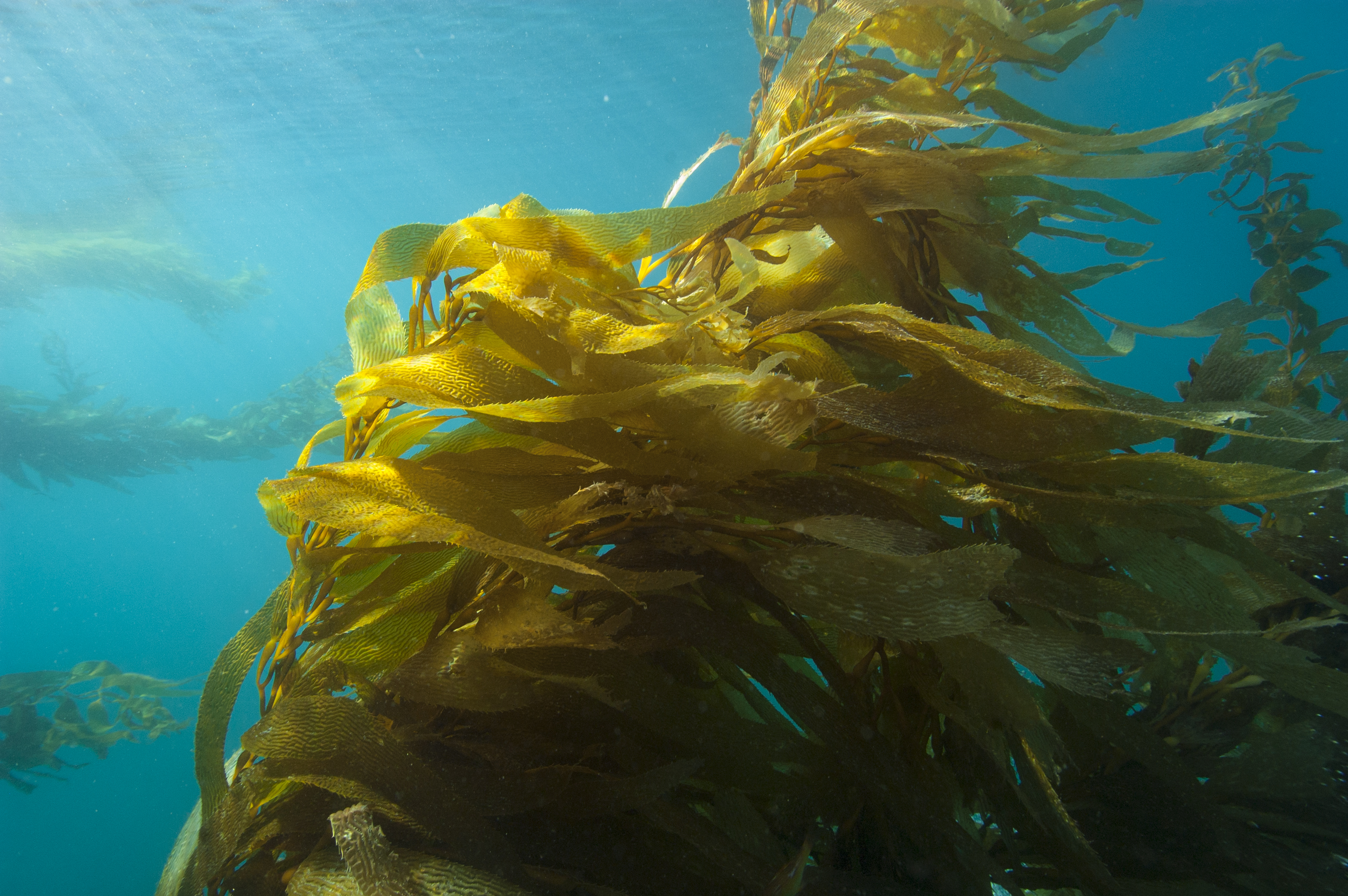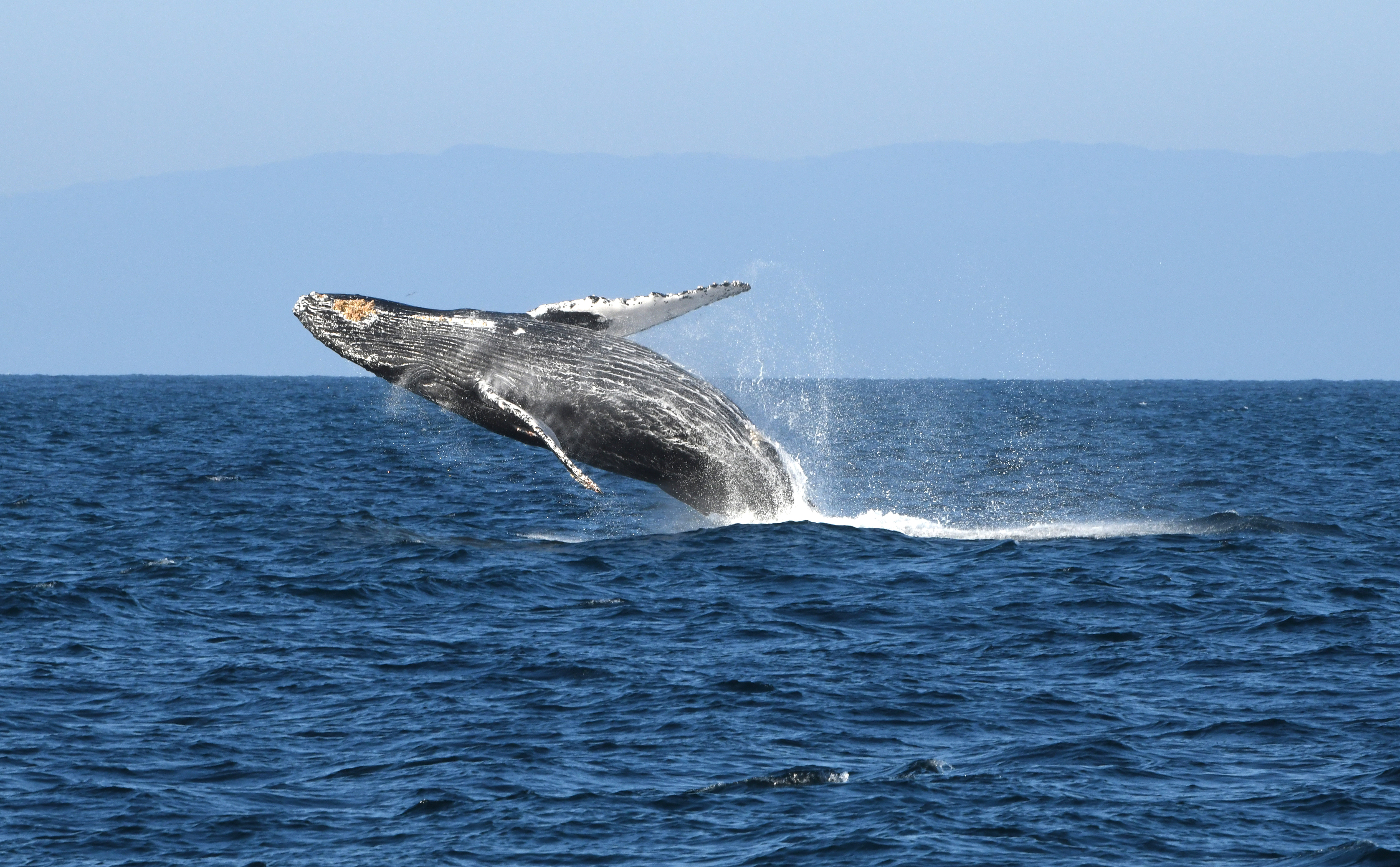A New Marine Protected Area on America’s West Coast: Chumash Heritage National Marine Sanctuary
By Rachel Plunkett
October 2024
Editor’s Note: This article was revised on Feb. 10, 2025.
Editor’s Note: This article was revised on Feb. 11, 2025.
NOAA proudly welcomes Chumash Heritage National Marine Sanctuary—the third largest of America’s 17 existing national marine sanctuaries. The 4,543 square-mile sanctuary off the coast of Central California will conserve vibrant biodiversity and celebrate the area's rich cultural history. NOAA respects and will work meaningfully with Indigenous Peoples to help guide sanctuary management.
“There is a deep sense of pride, joy, and accomplishment that comes with this designation,” exclaims Paul Michel, West Coast Region policy coordinator for NOAA’s Office of National Marine Sanctuaries. “This will propel us forward in bringing meaningful, comprehensive ecosystem-based and community-based management to the nationally significant natural, historical, and cultural resources of this amazing coast and ocean.”
A Community Driven Process
The sanctuary was proposed for nomination in 2015 by the Northern Chumash Tribal Council, and NOAA began the public designation process in November 2021, receiving more than 110,000 public comments on the draft designation documents, of which more than 98% were supportive of sanctuary designation.
This designation helps to address nature loss and changing ocean conditions, while also supporting access to the outdoors for everyone, including through stronger engagement and partnerships with Tribal and Indigenous communities.
John Armor, director of NOAA’s Office of National Marine Sanctuaries, expressed his support and excitement for this unique milestone, saying that “Indigenous Peoples have been protecting and conserving the ocean off Central California for millenia, and will continue to do so. The designation of Chumash Heritage National Marine Sanctuary is incredibly significant in that it recognizes and celebrates this connection and enables NOAA to work collaboratively and meaningfully with Indigenous Peoples to care for and protect this part of the ocean into the future.”

Protecting Biodiversity
This is the first new sanctuary in the National Marine Sanctuary System specifically managed for biodiversity conservation since the designation of Olympic Coast National Marine Sanctuary in 1994. In contrast, the three other sanctuaries designated over the past three decades were primarily focused on maritime heritage and cultural resource preservation.
The boundary of Chumash Heritage National Marine Sanctuary covers 4,543 square miles of coastal and ocean waters offshore Central California stretching out to nearly 60 miles from shore and down to a maximum depth of 11,580 feet. This area is an important and vibrant ecological transition zone with high biological productivity that supports dense aggregations of marine life, including a plethora of sea birds, marine mammals, invertebrates, and fishes. Habitats within these waters range from lush kelp forests to rocky reefs to sandy beaches, as well as significant offshore features like the Rodriguez Seamount, Arguello Canyon, and a portion of Santa Lucia Bank.

This area is part of the California Current ecosystem, where important ocean processes, like the upwelling of nutrient-rich waters, support abundant marine life and a variety of species. Because of the ongoing and emerging challenges posed by consumptive and non-consumptive human uses and changing ocean conditions, additional protections were needed.
“This sanctuary conserves the area’s rich biodiversity and creates new opportunities for research, and responsible recreation and tourism, ensuring this incredible ecosystem is protected for future generations to experience and enjoy,” Armor states.
Additionally, the sanctuary is expected to have beneficial impacts- such as improving ecosystem resilience through the protection of habitats that help remove and sequester “blue carbon,” like soft-bottom benthic habitat and kelp forest habitat.
Habitat Connectivity
Larger marine protected areas provide more extensive coverage, enabling marine species to move between different habitats, such as from breeding sites to feeding grounds. For migratory species, this connectivity is essential to their survival and reproduction. Chumash Heritage National Marine Sanctuary, one of America’s largest sanctuaries, plays a vital role in this effort and also overlaps with California’s network of marine protected areas.

This new sanctuary enhances the state's existing network of marine protected areas by offering large-scale ecosystem-level conservation and a framework for community collaboration in managing threats both within and beyond state-protected areas.
It also greatly enhances habitat connectivity and migratory corridors for wildlife between Monterey Bay and Greater Farallones/Cordell Bank national marine sanctuaries to the north, and Channel Islands National Marine Sanctuary to the south.
Managing Multiple Uses in a Changing Ocean
America’s national marine sanctuaries are renowned for successfully protecting resources while promoting environmental stewardship, Indigenous cultural activities, research and monitoring, and responsible recreation.
“As I have gotten to know this stretch of coast, I am truly amazed with how beautiful and awe-inspiring it is,” Michel emphasizes. “The many beaches, trails, and sparkling waters teeming with wildlife, offer endless recreation and tourism opportunities. The new sanctuary will promote sustainable tourism and stewardship by partnering with local recreational users, parks, and businesses who share our passion for responsible uses.”
Each national marine sanctuary has its own set of regulations to protect important cultural and natural resources, while still promoting the enjoyment and responsible use of these areas. Regulations for Chumash Heritage National Marine Sanctuary are generally similar to other national marine sanctuaries along the U.S. West Coast, and in particular prohibit new offshore oil and gas activities, the unauthorized take or possession of protected wildlife, and disturbance of submerged lands. A full list of sanctuary regulations can be found in the Final Rule.

The sanctuary’s boundaries exclude areas where future subsea electrical transmission cables and floating offshore substations could be installed outside the sanctuary to connect the Morro Bay Wind Energy Area to the electrical power grid at Morro Bay and Diablo Canyon Power Plant. The Office of National Marine Sanctuaries expects to find a balance between maintaining or expanding cable systems within the sanctuary area and conserving important sanctuary resources, including living, historical, and cultural resources. These areas will also be reconsidered in the future as part of the Boundary Adjustment Action Plan. By maintaining opportunities for future renewable energy projects through a phased approach to the sanctuary, the boundaries showcase how NOAA can advance both conservation for our marine ecosystems and responsible renewable energy development.
“California’s national marine sanctuaries are vital to the economic health of America’s coastal communities,” said Nicole R. LeBoeuf, director of NOAA’s National Ocean Service. “Due to threats from human activities, industrial uses, and more frequent and persistent marine heatwaves, areas like Chumash Heritage National Marine Sanctuary are designed to promote the long-term conservation and protection of natural and cultural resources in the region and support local and regional economies that rely on those resources.”
Meaningfully Working with Indigenous Peoples
The Chumash Peoples have lived along the California coastline for at least 13,000 years. The waters within and surrounding the sanctuary are of great significance to the Chumash Peoples. Their distinct Indigenous Knowledge systems, cultural practices, and deep connections to this place provide essential expertise and inspiration for sustaining both marine ecosystems and cultural identity. For hundreds of generations, Chumash Peoples have lived in a reciprocal relationship of balance as part of this environment. They continue to care for the environment and their cultures, while resiliently surviving the brutal trials and trauma of history.
"The announcement of NOAA designating Chumash Heritage National Marine Sanctuary couldn't have come at a better time,” said Violet Sage Walker, chairwoman of the Northern Chumash Tribal Council, the organization that nominated the sanctuary in 2015 under the leadership of her father, the late Chief Fred Collins. “This recognition is a crucial moment for our community. It will not only raise awareness of the Chumash People around the world, but also honor the legacy of my late father and affirm our commitment to the stewardship of our land. I hope we will be remembered for our dedication to actively protecting and nurturing Mother Earth and Grandmother Ocean.”

The waters that comprise Chumash Heritage National Marine Sanctuary cover now-submerged ancestral lands, as during the last Ice Age and up to several thousand years ago, what is now seabed was dry land. Submerged cultural resources, including possible ancient village locations once present along now-submerged paleoshorelines, now receive long-term protection from sanctuary regulations. NOAA has focused on developing a management plan that takes into account the deep connection and history of Indigenous Peoples of the sanctuary’s coastal areas.
“Generations of U.S. land and water policies have placed Native Americans at a great disadvantage throughout our history,” said Kenneth Kahn, chairman of the Santa Ynez Band of Chumash Indians. “Today's announcement is a sign that things are changing. The Chumash Tribal government never relinquished its aboriginal right to manage our traditional homelands. We are grateful that NOAA recognizes this inherent sovereignty and welcomed us as a co-stewards of the sanctuary that bears our name. This is a time for celebration.”
America’s Maritime Past
The coastline and offshore waters of this region have long served as critical routes for maritime trade during the Spanish, Mexican, and American periods. The history of shipwrecks along these shores reflects that past, featuring vessels such as coastal schooners and smaller sailing ships that transported goods like produce and lumber before the advent of railroads and highways in California. Over 200 documented shipwrecks dot the area, including notable vessels like the Gold Rush-era steamship Yankee Blade, listed on the National Register of Historic Places.
Among the ocean steamships that met their fate here, Yankee Blade is the oldest, representing the wooden sidewheelers that ferried passengers to and from San Francisco during the Gold Rush. Its sinking remains one of the region's most tragic maritime disasters.

Maritime heritage resources in these protected waters go beyond shipwrecks, and also include the intangible—places imbued with sacred significance and historical resonance.
A Sanctuary Community
NOAA will soon announce the establishment of a new Chumash Heritage National Marine Sanctuary Advisory Council that will include 15 voting seat members and 15 alternates, reflecting a variety of local community interests and experience.
“Sanctuary advisory councils play a very important role in sanctuary management, providing a communication bridge to communities and facilitating input and feedback on important sanctuary issues,” explains Michel. “Meetings are open to the public, and we welcome public comment on issues before the council.”

A key feature of the new sanctuary’s management structure is an Indigenous collaborative co-stewardship framework. The unique arrangement, which features an Intergovernmental Policy Council, Indigenous Knowledge seats on a Sanctuary Advisory Council, and a planned Indigenous Cultures Advisory Panel, will support meaningful engagement and partnership building with local Tribes and Indigenous communities*, providing involvement opportunities to help guide management of the sanctuary.
Those interested in helping to shape the future of America’s newest national marine sanctuary in Central California can subscribe to the sanctuary’s newsletter for future updates on advisory council recruitment.
Rachel Plunkett is the content manager and senior writer/editor at NOAA’s Office of National Marine Sanctuaries.
*The phrase “Tribes and Indigenous communities” is used by NOAA during this designation to refer broadly to federally recognized Tribes, Native American Tribes that are not federally recognized, and other Indigenous groups and organizations.

